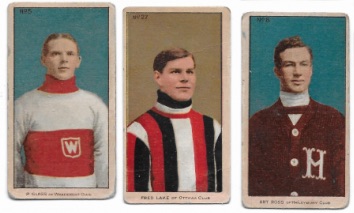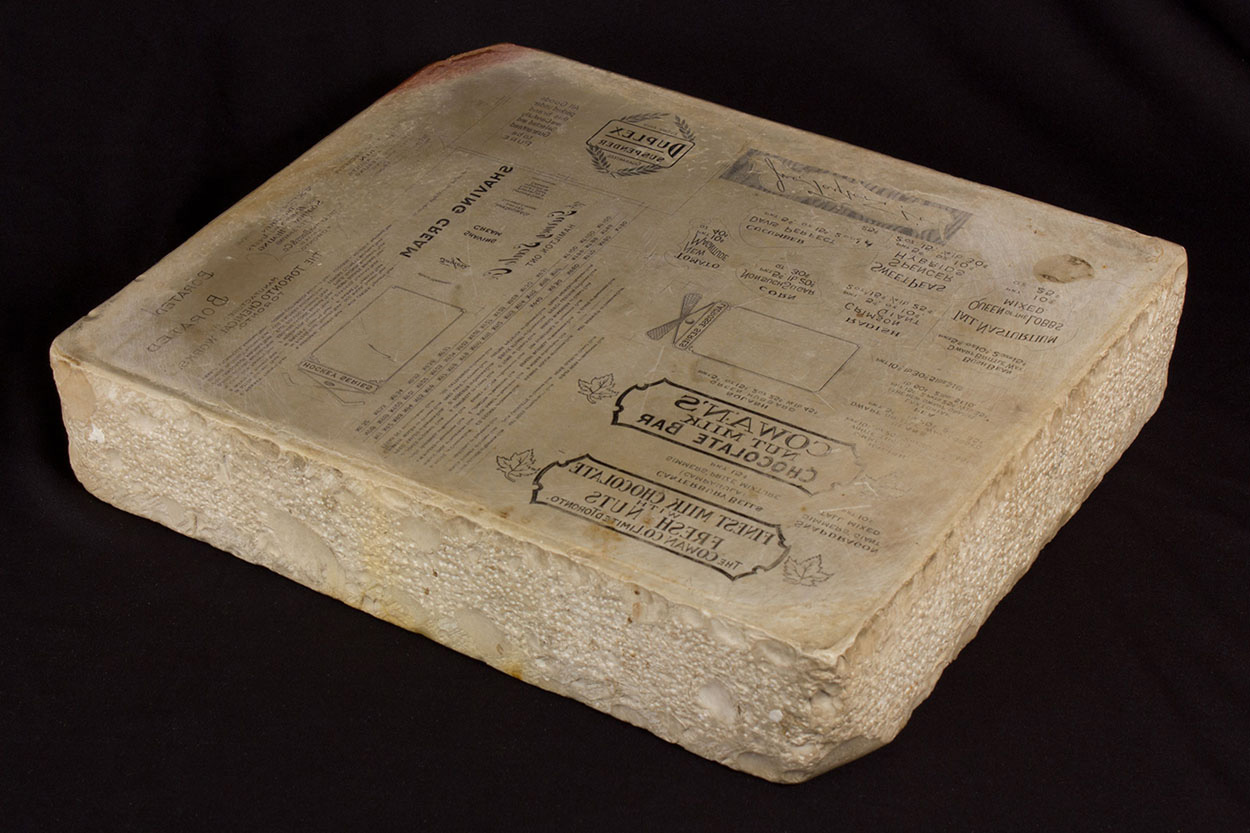|
|
|
|
#1
|
|||
|
|||
|
Cylinders... not plates.
|
|
#2
|
||||
|
||||
|
I'm not sure what your implying Frank.
|
|
#3
|
|||
|
|||
|
In more modern presses the plates were thin enough to wrap around a cylinder.
That cylinder has grippers and adjusters to move and tension the plate. It looks like this is a system using a tube as a plate, I'll have to look it up to see if it was coated after casting or if they just applied the design straight onto the zinc. It would probably be set up by laying out transfers just as a stone would be. It also sounds similar to the press Brett Litho had. |
|
#4
|
|||
|
|||
|
Overall, this is pretty amazing news.
I've suspected a two color press being used for at least some T206s for a few years now. Many color missing cards are missing two colors, and where there are registration issues the colors are often well registered in pairs. It's certainly not all of every press run, but that ALC did actually have a license for a multi color press makes one being used far more certain. The closest I came in the past to even so much as modern style plates was ALC suing a couple guys from Britain for selling them a process for photographically produced plates that was apparently totally useless if not fake altogether. |
|
#5
|
||||
|
||||
|
Quote:
Edited to add I could be wrong but the way I read it American Lithograph bought the patent so they may have been the only ones using this type of press for years later. Last edited by Pat R; 11-01-2021 at 01:18 PM. Reason: added info |
|
#6
|
|||
|
|||
|
American Lithograph could have bought that to use it, or to deny it to competitors.
Lithography to me means printing from a stone. Smooth, polished flat surface. Wax, fat or oil is placed where they wanted the stone to remain, and then an acid on all of it eats away the unwaxed surface, then it's all cleaned. What's left is a stone plate. I am unsure of the timing, but I think in the late 1800s they got away from stones and started using metal plates. That sheet that depicts rollers, with faces across the middle one, has the word 'transfer' in the caption. Transfer rollers could have been getting their ink from a stone, or a metal plate. Old school lithography is a work of beauty, it's art. Until lithography came along, anyone with art on their walls would have had original art. Currier and Ives is a name some of us recognize. That's because they got art, lithographic art, into the homes of their subscribers and patrons. They could print that horse drawn sleigh hauling a happy family across a snow covered bridge and lane and through the woods on their way to grandmother's house. All of these little cards we collect were, and ARE, works of art. |
|
#7
|
||||
|
||||
|
Quote:
|
|
#8
|
||||
|
||||
|
It's interesting that the Americans were using rollers to make their tobacco cards, such as the T206s. In Canada, stone lithography was used to make the first hockey cards. Below is a picture of the C56 cards - the first hockey set issued here in Canada:
 And do you guys want to know something crazy? One of the actual stones that was used to manufacture these cards was discovered here recently! Here it is:  I don't think anyone knows the name of the company that was hired by Imperial Tobacco Ltd. to make these cards, but they were also doing things for other companies as well. |
|
#9
|
|||
|
|||
|
Quote:
There are/were some proofing presses that still do that, as well as a few places that print art. Later flatbed presses were offset lithography, where the stone was inked, and transferred the image onto a rubber roller that transferred the image to the paper. The stones for that needed non-reversed images. And the way they were laid out was interesting. a smaller stone had the master image, and it was wet and inked with a very thick tarlike ink. That was printed onto basically tissue paper, making a transfer. Similar to the early 60's Topps iron on transfers. Those transfers were applied to the stone, and then the thin paper was removed using some solvent. Once they were all down, the etching process went on as usual. "Modern" presses were also offset, but the plates were thin aluminum coated with a limestone like surface. That had a thin wax layer that was light sensitive so they could be exposed using a photographic negative, than developed, in the etching process. There are newer versions that computer generate the plates on the press. I've read a bit about them, but haven't seen one in person. |
|
#10
|
|||
|
|||
|
This patent and the press Brett was apparently using fall in between the 1875 rotary offset presses that used cardboard as the offset mat, and Rubels 1901 press.
https://www.aptpressdirect.com/blog/...printing-press This press is using a solid roller as the plate, and arranging multiple watering/inking systems around a fairly large central cylinder that the paper travels on. Each inking station has it's own "plate" and prints a different color. Very similar to a non- lithographic press Hoe made back in the mid 1800's https://en.wikipedia.org/wiki/Rotary_printing_press As a practical arrangement, making adjustments etc to more than 2-3 inking stations would be a challenge, and those adjustments in inking and watering are usually made while the press is running. Which would make more than 2-3 stations more than a bit dangerous. Newer multi color presses are pretty much just multiple regular presses built on the same frame so the paper goes into each one sequentially. Even then the operator sometimes has to reach between two somewhat closely spaced running presses to adjust things. https://www.youtube.com/watch?v=EhPgr6nIgJ0&t=3s These setups can be something like 10 colors. |
 |
|
|
 Similar Threads
Similar Threads
|
||||
| Thread | Thread Starter | Forum | Replies | Last Post |
| American Lithographic Journals | GasHouseGang | Boxing / Wrestling Cards & Memorabilia Forum | 2 | 05-22-2020 01:31 PM |
| FS: Pile of Books to Read, Yes Read - SOLD | quinnsryche | Baseball Memorabilia B/S/T | 1 | 10-30-2018 03:23 PM |
| American Lithographic (ALC) Ledger Notes | Craig M | Net54baseball Vintage (WWII & Older) Baseball Cards & New Member Introductions | 4 | 04-06-2013 05:24 PM |
| American Lithographic Company Article | mkdltn | Net54baseball Vintage (WWII & Older) Baseball Cards & New Member Introductions | 2 | 07-20-2010 07:54 AM |
| The Ugly Side of AMerican Lithographic | toppcat | Net54baseball Vintage (WWII & Older) Baseball Cards & New Member Introductions | 14 | 02-18-2010 10:09 PM |